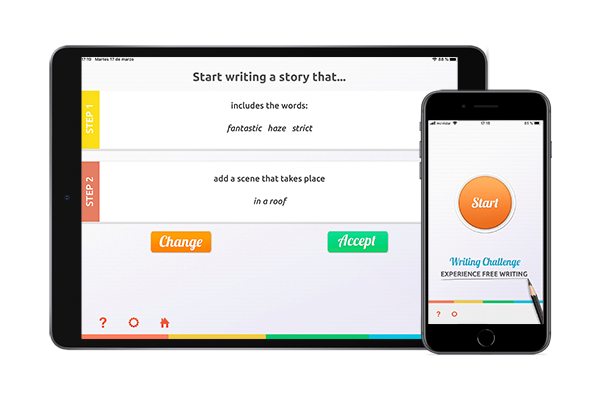
I bet you’ve heard that some characters in a story are round while others are flat, but do you know exactly what that means? How do you know if your characters are round or flat? Should you always create round and dynamic characters? How can you make your characters more believable? Before answering these questions, let’s first analyze what round and flat characters are and when to resort to using them:

Flat Characters
Only a few features (usually based on clichés) are necessary to create flat characters. They’re generally static characters meant to serve the story.
When should you use flat characters and why? Flat characters are often used in TV comedies (30-minute sitcoms with canned laughter) because comedic stories usually focus on the anecdote and the joke. Thanks to their commonplace situations and characters, sitcoms are able to transmit a sense of familiarity to the spectator. Flat characters also have a supporting role in stories with round main characters in order to achieve one of these effects:
When should you avoid flat characters?
Unless you’re specifically looking for one of the previous effects listed for flat characters, it’s best that your characters (especially the protagonists) are round in order for your readers to identify with them.
Round Characters
A round character is one that has depth. Round characters have weaknesses, strengths, flaws, fears, tastes, and dreams. They are well characterized in order to seem real. Furthermore, a round character is not static or inconsistent; it’s dynamic and changes over time. Round characters feel affected by the story’s events because they suffer their consequences and learn from them which makes them more realistic and believable. But what’s the secret to creating round and deep characters?

With Writing Challenge you will have thousands of suggestions so that your ideas are always ready. Say goodbye to creative blocks forever, and take muses with you everywhere. Have fun testing your writing out, and get ready to write non-stop!
1. Internal Changes
Do your characters undergo any internal changes throughout the story? Think about their situation at the beginning of the story. Is it the same as it is at the end? It shouldn’t be. They can be worse or better, but the story’s events should have affected them in some way.
2. External Changes
Do the external circumstances surrounding your characters change throughout the story? Just as their personalities suffer variations, their external conditions should as well. For example, one of your characters could be a farmer at the beginning of the story and then become a warrior by the end.
3. Goals
What do your characters want? They should have a conscious desire – something that moves them into action.
4. Wishes
What do your characters need? Regardless of what they think they want, there’s something they need at an unconscious level – something different from what they consciously desire. That contradiction will bring depth to your fictional heroes.
5. Achievements
What do your characters attain? Do they achieve any of their goals? How does that affect them? If you have the answer to the last question, you’ll have a clearer idea of how the story’s events have changed their way of facing life. For instance, if they achieve what they wanted at the beginning of the tale but that’s not what they really need, they can learn from their mistakes and try to correct them. However, they might also give into frustration.
6. Weaknesses
What are their weaknesses? Everybody makes mistakes and has fears and flaws, so if you want your characters to be more believable, they’d better have weak points and see themselves in need of facing them if possible. Your characters overcoming these weaknesses or not depends on the story you want to tell and on the type of evolution you want them to experience.
For example, in the U.S. TV series The Wire (By the way, it’s one of the best series I have watched in terms of characterization, and I highly recommend you watch it!), there are some characters that must face their flaws. Some overcome them and progress while others don’t and fail. The contrast between them is what makes the story more believable.
7. Strengths
What are their strengths? Apart from weaknesses, your characters can have strong points they may or may not know about. Sometimes, they discover them and learn how to make the most of them. Other times, they do not know, and it leads them to failure. You, as a writer, should be clear about those strengths and so should your readers be in order to better understand your characters.
8. Conflicts
What’s your characters’ inner conflicts? I’ve chosen this to be the last question to consider because once you’ve answered the previous seven areas of question, you’ll find this one easier to answer. Every good character must deal with an inner conflict throughout the story such as a mental debate between what they need and what they want or a moral struggle between what they’re trying to attain and what they consider correct. This type of dilemma makes your characters interesting, and their experiences can turn into life lessons for your readers.
In a good story, conflict is everywhere. In addition to the main conflict, you can add peripheral conflicts to create subplots, internal struggles...
It’s possible that one of the most difficult parts of the writing process is coming up with a title for your story. This is also a challenge for me.
It may seems the difference between a novel and a tale lies in the length of the story, but there's much more. Find out how to write a great short story.
SHARE THIS PAGE!